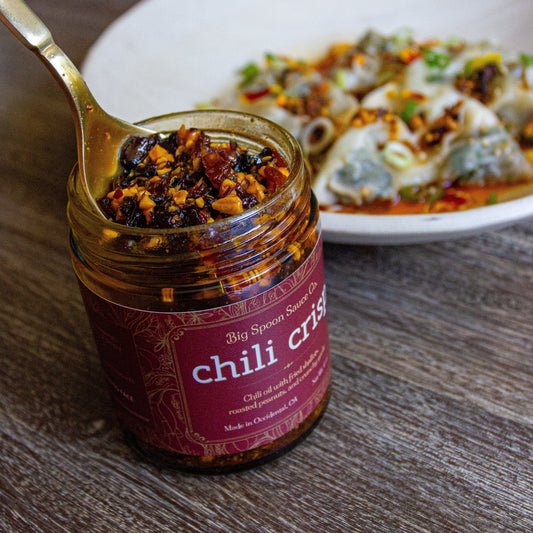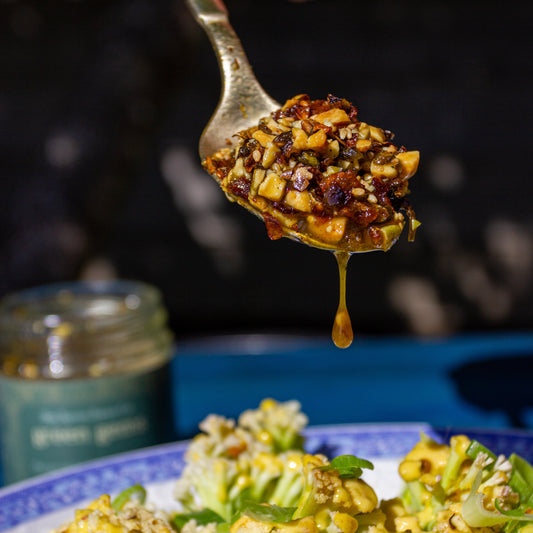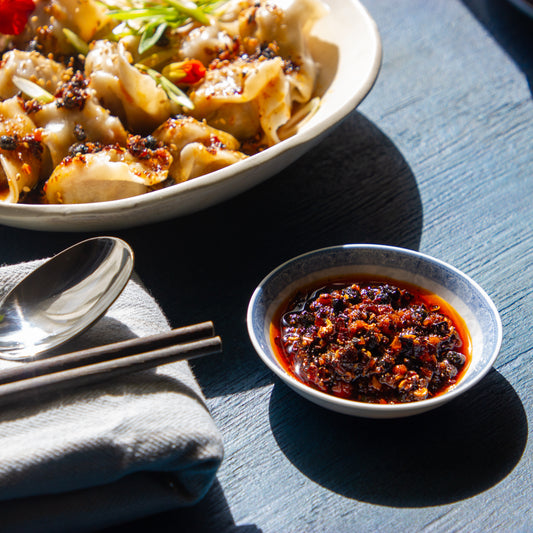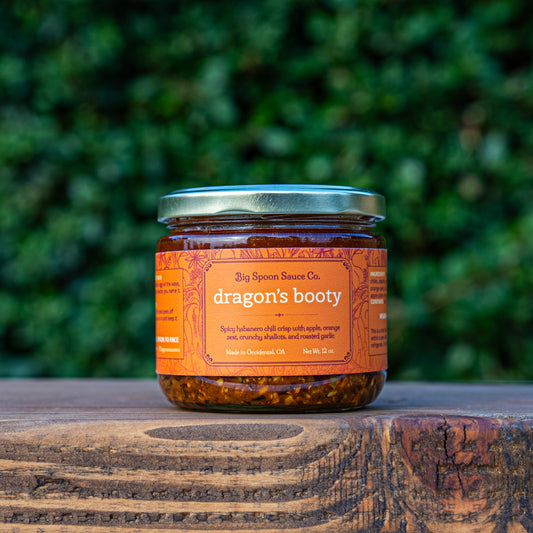Lani here, writing to you from the couch on a chilly day in March eating this:

Until recently, we literally didn't have any plates in our house. The closest thing we had to dinner plates were still bowl-ish plates with sloping sides, because everything I cook is brothy or saucy and is best eaten with a spoon and chopsticks rather than a fork and a knife. We recently invested in some dinner plates to make eating things like pork chops or steaks less of an elbow-throwing affair, but this is a recent development. All year long, brothy dinners reign supreme. Like this beefy khao soi with coconut cream and a gooood amount of Main Squeeze to top.
It’s Main Squeeze production season, which means we’re working with an abundance of lemongrass, lemon juice, and Meyer lemons. So, naturally, our brothy dinners tend to lean on these bright and zesty flavors, which have been a true mood-lifter during the dark and chilly winter days. I’ve been turning to our collection of Southeast Asian cookbooks for inspiration, and cooking dishes like beef khao soi pictured above, seafood tom yum, and noodle bowls topped with lemongrass-marinated chicken. The sun might not come out much in the winter months, but we do get citrus season! Coincidence?

Spring Seasonal: Main Squeeze
All of our seasonal recipes have their own fan club, but the Main Squeeze is our most-requested sauce. We get asked about this sauce at every event. We get DMs and emails and people at the grocery store asking us if they dreamt up this hot, bright yellow lemon sauce because they haven't been able to find it or anything like it since.
We know this sauce is one of a kind. Full of Meyer lemon zest, hot lemon drop peppers, lemongrass, and galangal, this is a chili crisp that is JUICY. And spicy, and crispy, and salty, and viscous in a way that coats your mouth with all those infused flavors just right.
Main Squeeze involves a significant amount of hand zesting, squeezing, chopping, and dehydrating. But we believe that the resulting flavor is worth the extra effort, and from the amount of feedback we get on this particular recipe, we know you agree. Your ongoing support enables us to partner with Sonoma County farmers and growers to process our ingredients fresh in-house, which carries a wealth of flavor that store-bought ingredients only pale in comparison to. We made only 35 cases of Main Squeeze this year, because this recipe is even harder to scale than the others!
Acknowledgements
Production: We recruited some friends to help us in the kitchen to bring this sauce to life this year. Trust us when we say we wouldn’t have gotten it done without them. Big thanks to Mandy, Shannon, David, Gillian, and Charlotte.
Meyer lemons: We gathered organic, pesticide-free Meyer lemons from those of you lucky enough to have a backyard surplus. This year’s batch of Main Squeeze is full of zesty Meyers sourced by Emily & Terry, Tom & Wendy, Leslie, Julianne, and Joan. Thank you for sharing your bounty!
Peppers: This sauce features spicy lemon drop peppers grown by Triple T Farms in Santa Rosa and aji amarillos grown by Tookey Farms in Healdsburg. These two together are a match made in lemony heaven.

All about bánh mì
This is less of a recipe section (I know anyone who subscribes to a chili crisp club will know how to make a sandwich) than a manifestation of sunny spring days ahead, eating lunch under a tree/at the top of a mountain/on a road trip/sitting on the beach. Choose one, or choose all. I love packing sandwiches for all outdoor adventures, so I’m just going to wax poetic about bánh mì (Vietnamese sandwiches) and how our Main Squeeze chili crisp is an ideal complement.
A bánh mì is a Vietnamese sandwich, traditionally made on a crisp baguette with porky cold cuts or another savory grilled protein. The supporting characters that make it sing are tangy pickled veggies, fresh herbs, sliced jalapeños, mayo, and a creamy spread of liver pâté.
The bánh mì has long been regarded as a symbol of Vietnamese resilience and adaptability. When the French colonized Vietnam in the late 19th and early 20th centuries, they introduced baguettes, pâté, and butter, but these ingredients were expensive and largely reserved for the French and wealthy Vietnamese elite. Over time, Vietnamese cooks adapted the French baguette to their own tastes and realities. They used local ingredients like pickled vegetables, fresh herbs, chili, and fish sauce, creating a more affordable version of the sandwich that was tuned to their own tastes. The bánh mì became a symbol of ingenuity, transforming a colonial import into something distinctly Vietnamese.
By the time the French were forced out in 1954, the bánh mì had become a staple. Today, the bánh mì is one of the most iconic Vietnamese foods, easily found in mom-and-pop shops in any metropolitan setting, and a perfect example of how history and culture shape the way we eat. To me, a bánh mì is an A+ sandwich, with the ideal mix of crunch, heat, fat, and brightness. Here’s an anatomical breakdown of the glorious banh mi, and notes on how I’m making mine for my next lunch on the go!
Cold cuts: Pick up some sliced ham and head cheese from your favorite local purveyor of fine meat products. Head cheese provides that crunchy texture from all the cartilage and collagen, which contributes to the overall experience (and health!) of this sandwich and is hard to substitute. But a lemongrass-marinated grilled chicken thigh or firm tofu will also be delicious.
Pickled veggies: Chop or shred some root veg like carrots and daikon and toss with some acid like citrus juice or rice vinegar, some grated garlic, and a bit of sugar.
Fresh herbs: A bánh mì doesn’t look complete without a few fresh sprigs of cilantro.
Liver pâté: I’m a big fan of the traditional bánh mì that has a generous amount of liver spread on one side. If the liver turns you off, I understand. The thing to know is that good pâté is not a health food. I once asked a butcher in Harlem why my liver pâté didn’t taste like the ones the neighborhood restaurants served with fried chicken. He told me the ratio of butter to liver should be 1:1. If it’s Christmas, make it 2:1. It works every time. Sear some shallots in some schmaltz, add the livers, add a splash of cognac or vermouth (or some of your Manhattan), and blitz it with butter until smooth in a blender. Season with five spice and fish sauce to taste. Make it the night before and let the flavors settle in the fridge overnight. Yum.
For vegetarians: Andrea Nguyen, an SF-based Vietnamese-American food writer and chef, has a recipe for edamame pate in her bánh mì cookbook. It adds the same creamy texture and provides the same structural support that liver pâté does to help keep the sandwich together.
Peppers: In place of the traditional sliced jalapeños for spice, drizzle some Main Squeeze over the top to finish. It will add a punch of citrusy heat that complements the rich umami of pâté and meat, the freshness of cilantro, and the tang of pickled carrots and daikon. The olive oil base of this chili crisp helps it get into all the nooks and crannies with a spicy kick that ties everything together!

Finally, a note from us
Thank you for continuing to support our vision. This season, we've been reminded that building a small business comes with its challenges. Your enthusiasm and support make every day in the kitchen and every behind-the-scenes hurdle worth it. We're incredibly grateful to have you in our community, and we hope this jar brings as much brightness to your spring as you've brought to ours.








